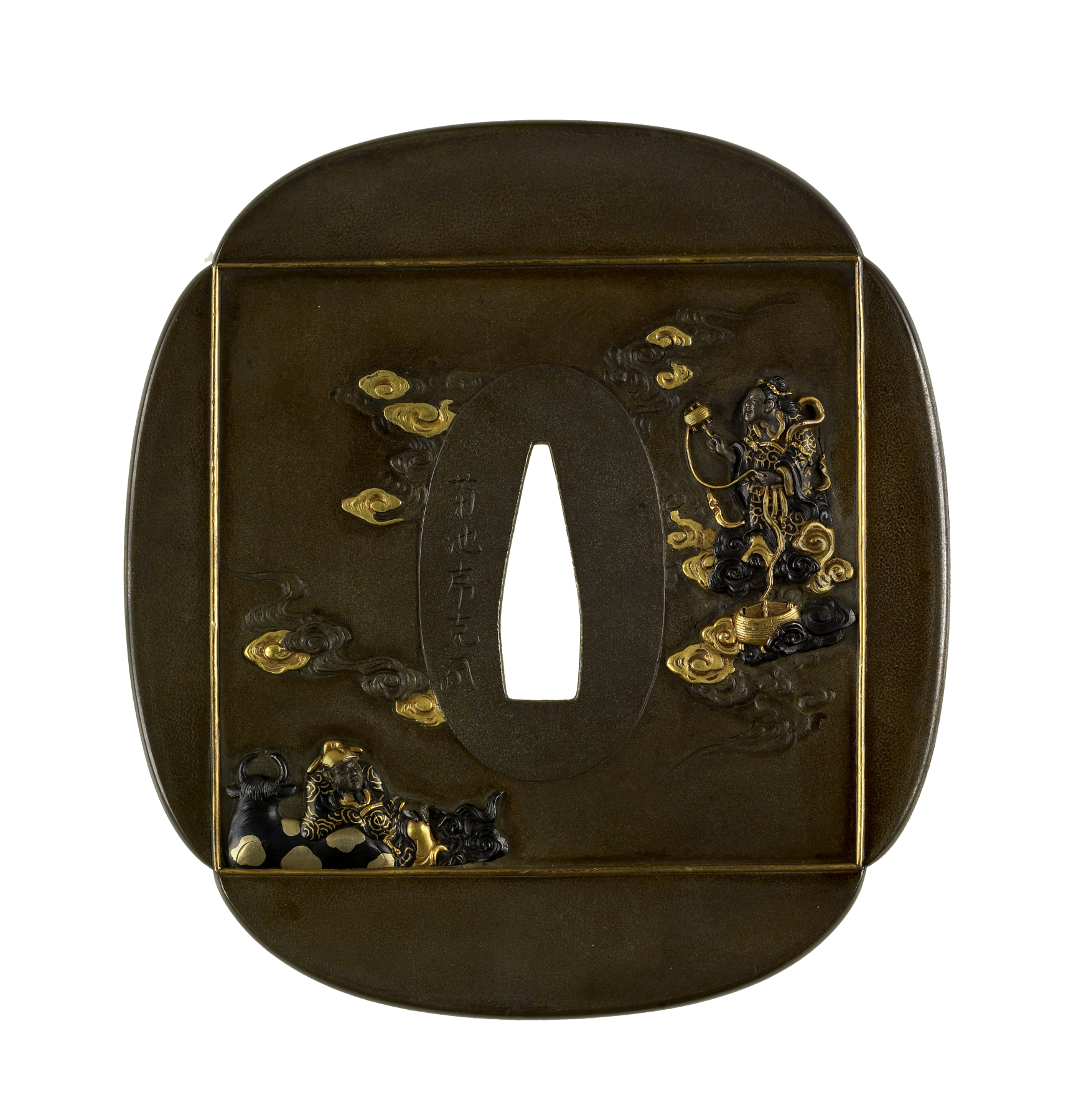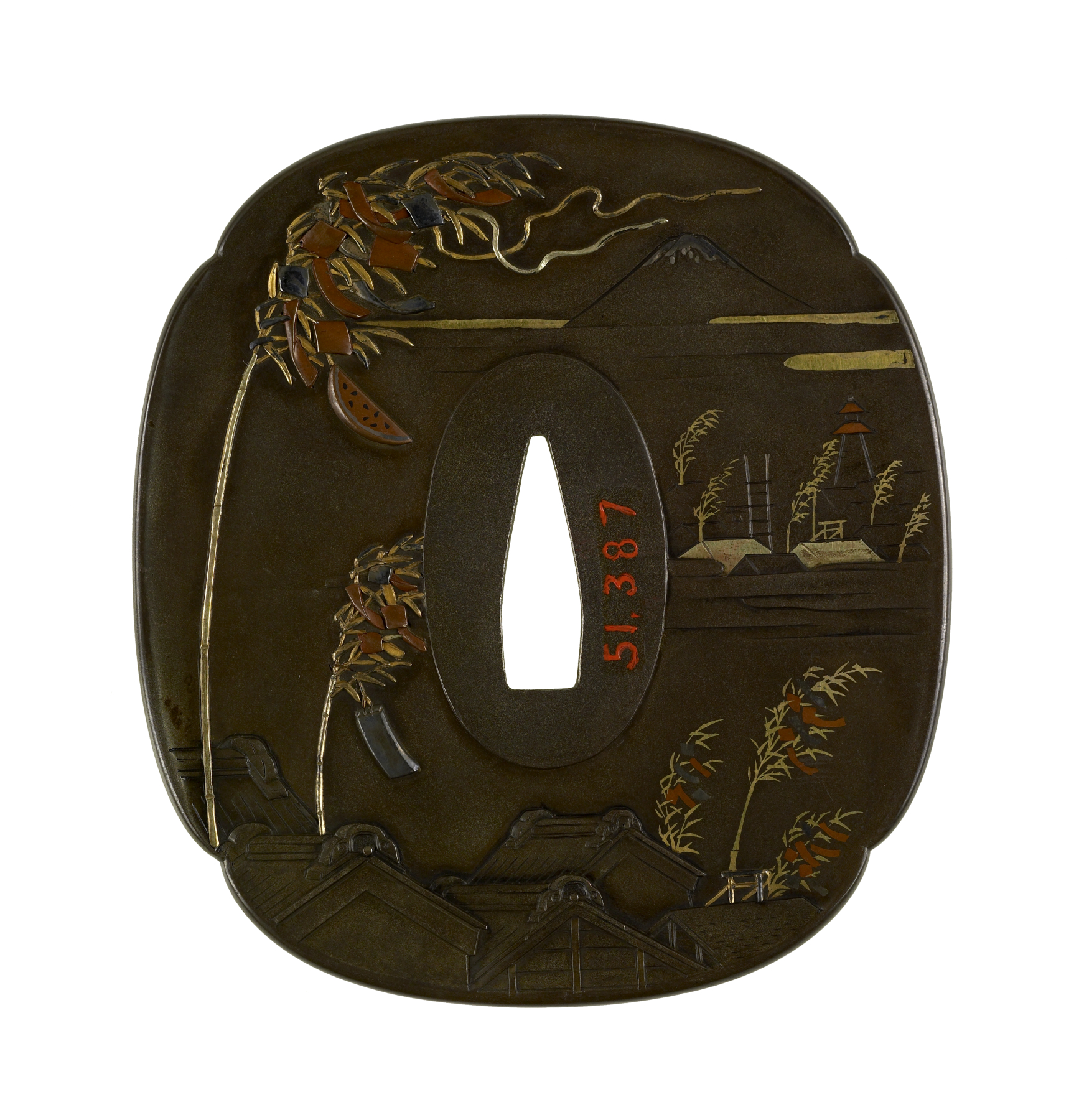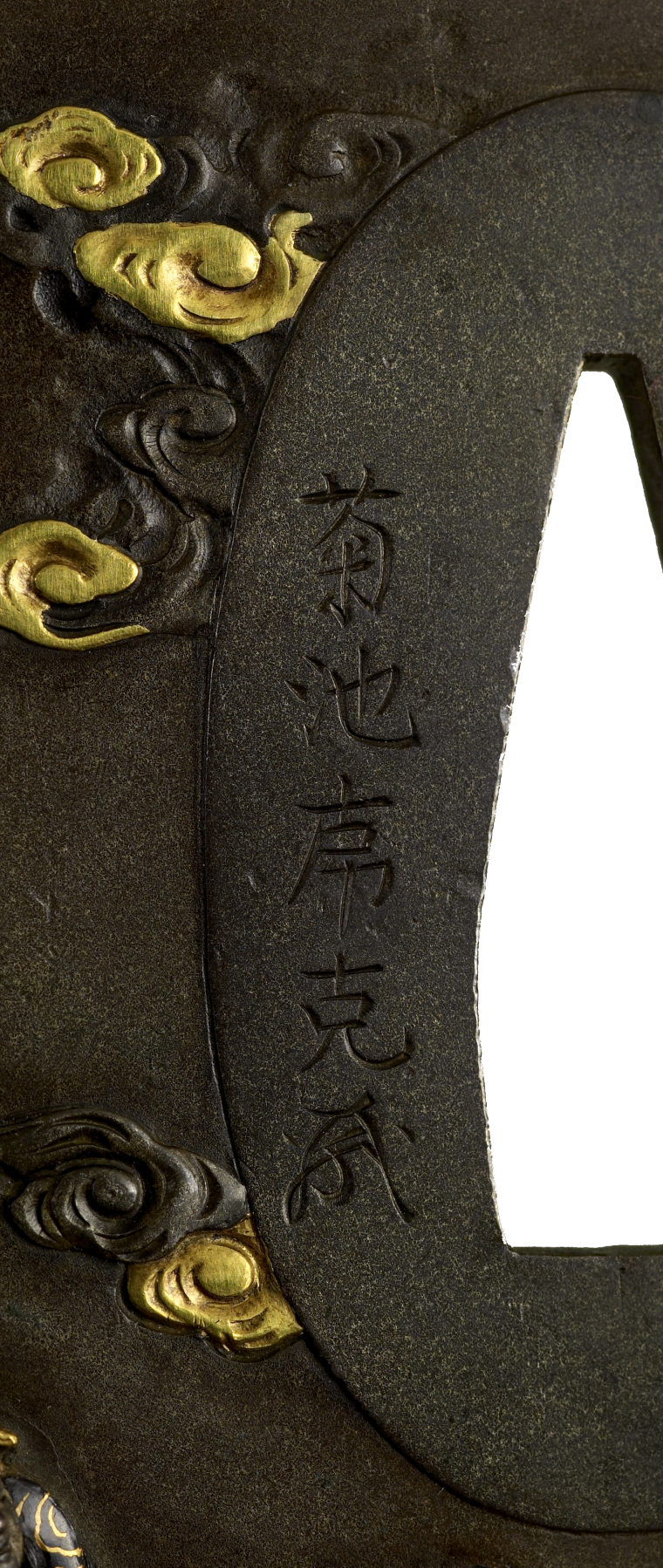Tsuba with Tanabata Festival Decorations
(Japanese Military Armor)
The front of this tsuba shows the yearly meeting of the celestial lovers the Weaving Maiden (Jp. "Orihime") and the Shepherd (Jp. "Hikoboshi"). They are the stars Vega and Altair. Because they neglected their work when they were together, the Weaving Maiden's father, the King of Heaven, decreed that they could only meet across the River of Heaven (i.e. the Milky Way) once a year. Their meeting is celebrated on the 7th day of the 7th month with a festival called Tanabata. They are depicted on the front of the tsuba within a square frame. The Weaving Maiden is shown at the upper right spinning thread. The Shepherd is shown with cattle on the lower left. On the reverse of the tsuba, rooftops of houses can be seen in the foreground and to the right of the central opening. Stalks of bamboo hung with paper strips decorate the houses for Tanabata. Mount Fuji is shown in the background at the upper right.
Inscription
Provenance
Provenance (from the French provenir, 'to come from/forth') is the chronology of the ownership, custody, or location of a historical object. Learn more about provenance at the Walters.
Henry Walters, Baltimore [date and mode of acquisition unknown]; Walters Art Museum, 1931, by bequest.
Geographies
Japan, Tokyo (Edo) (Place of Origin)
Measurements
3 1/4 in. (8.3 cm)
Credit Line
Acquired by Henry Walters
Location in Museum
Not on view
Accession Number
In libraries, galleries, museums, and archives, an accession number is a unique identifier assigned to each object in the collection.
In libraries, galleries, museums, and archives, an accession number is a unique identifier assigned to each object in the collection.
51.387






